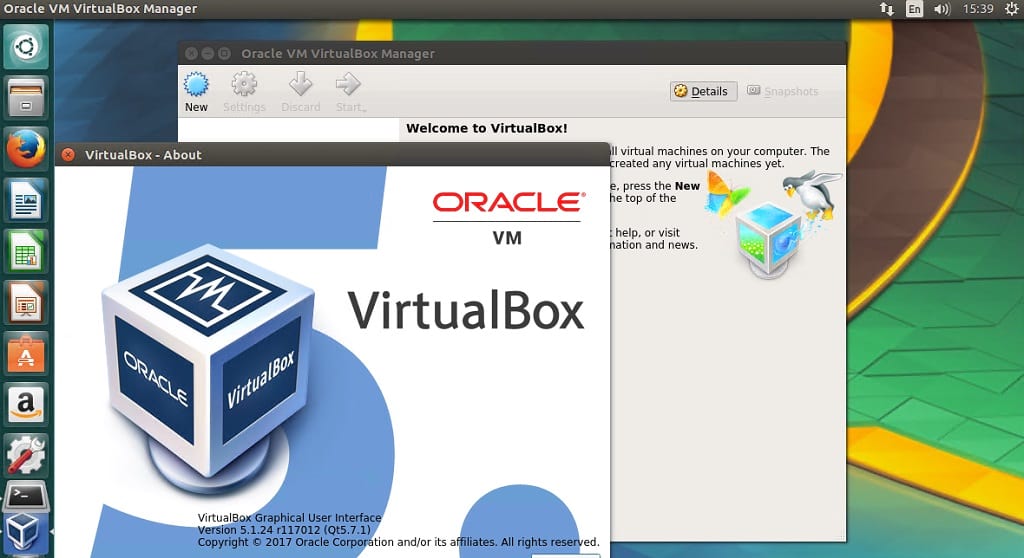
- #Virtualbox images how to#
- #Virtualbox images install#
- #Virtualbox images update#
- #Virtualbox images software#
- #Virtualbox images code#
Remember to check the ‘Read Me’ section of each OS that has the basic requirement and username/password. You can easily download and attach the VDI file to VirtualBox as Operating System hard disk to use instantly. These pre-installed VirtualBox images can work on any Windows Operating Systems including Windows 10, 8.1and Windows 7, Linux and macOS laptop or desktop computers.Īll the open-source VDI images and free and it will be free always. Since some of the existing players provide downloads via community-based download, mirror sites and Torrent files which have slow download speed and plenty of ads including pop-ups and redirections, Sysprobs decided to host our pre-installed images on dedicated cloud storage with the premium network. It is always good to download this pre-installed and updated virtual machines instead of installing from beginning with ISO or DVD. Also, we have included the links of Windows client and Server OS pre-installed images for Oracle VirtualBox.
#Virtualbox images update#
We install, update and upload them to our cloud storage where you can download directly on a faster network.
#Virtualbox images code#
The following packages have unmet dependencies:īuild-essential : Depends: libc6-dev but it is not going to be installed orĭepends: g++ (>= 4:9.2) but it is not going to be installedĮ: Unable to correct problems, you have held broken packages.Īny thought? I basically want to write my code in C / C++ (including system calls) and run them.Here you can download some of the leading open-source (Linux/UNIX) pre-installed VirtualBox images. The following information may help to resolve the situation: Requested an impossible situation or if you are using the unstableĭistribution that some required packages have not yet been created

Gcc: fatal error: stdio.h: No such file or directory Basically the libc library and header files are not there though I have updated all the files during install. Post the installation of Ubuntu 20.04.3 LTS, I am having a peculiar problem. Thanks Abhishek that was very helpful and easy to follow.

You have to look for the virtualization option in the BIOS and enable it. Reboot your system and as soon as it powers up, press F2/F10/F12 to access BIOS settings. You’ll have to activate it in your BIOS settings first. This means that virtualization is blocked on your system. Not in a hypervisor partition (HVP=0) (VERR_NEM_NOT_AVAILABLE).ĪMD-V is disabled in the BIOS (or by the host OS) (VERR_SVM_DISABLED).

If you face this error while using the virtual machine: Troubleshooting: AMD-V is disabled in the BIOS I strongly recommend using VirtualBox Guest Additions on Ubuntu for it provides better compatibility and you would be able to use copy-paste and drag-drop between Linux and Windows. You can even delete the Linux ISO that you downloaded earlier. The installation is a one time only process. From now on, just click on the installed Linux virtual machine. If you prefer videos, you can watch the one below from our YouTube channel:Īnd that’s all. I am installing Ubuntu 17.10 in this tutorial, but the same steps apply to any other Linux distribution. Make sure to enable virtualization in the BIOS.(It can work with less RAM as well, but your system will start to lag while using Linux in the virtual machine.) Windows system with at least 12 GB of free space.(You can also use some other computer with an internet connection to download these files.)
#Virtualbox images software#

It is recommended that your system should have at least 4GB of RAM to get decent performance from the virtual operating system.
#Virtualbox images install#
It enables you to install other operating systems in virtual machines. VirtualBox is free and open source virtualization software from Oracle. Installing Linux inside Windows using VirtualBox
#Virtualbox images how to#
In this tutorial, I’ll show you how to install Linux inside Windows using VirtualBox. When you just want to try Linux for limited use, virtual machines provide the most comfortable option. Basically, you install and use Linux like any regular Windows application. You can even install Linux within Windows from Microsoft Store (though this only provides you with the command line version of Linux).īut if you want to use Linux without making any changes to your Windows system, you can go the virtual machine route. You can dual boot Linux with Windows and choose one of the operating systems at the boot time. You can clean everything from your system and install Linux. This step-by-step guide shows you how to install Linux inside Windows using VirtualBox. Brief: Using Linux in a virtual machine gives you the option to try Linux within Windows.


 0 kommentar(er)
0 kommentar(er)
